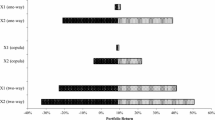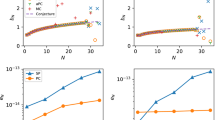Abstract
In this paper we deal with the computational complexity problem of checking the coherence of a partial probability assessment (called CPA). The CPA problem, like its analogous PSAT, is NP-complete so we look for an heuristic procedure to make tractable reasonable instances of the problem. Starting from the characteristic feature of de Finetti's approach (i.e. the explicit distinction between the probabilistic assessment and the logical relations among the sentences) we introduce several rules for a sequential “elimination” of Boolean variables from the domain of the assessment. The procedure resembles the well-known Davis-Putnam rules for the satisfiability, however we have, as a drawback, the introduction of constraints (among real variables) whose satisfiability must be checked. In simple examples we test the efficiency of the procedure respect to the “traditional” approach of solving a linear system with a huge coefficient matrix built from the atoms generated by the domain of the assessment.
Similar content being viewed by others
Author information
Authors and Affiliations
Rights and permissions
About this article
Cite this article
Baioletti, M., Capotorti, A., Tulipani, S. et al. Elimination of Boolean variables for probabilistic coherence. Soft Computing 4, 81–88 (2000). https://doi.org/10.1007/s005000000040
Issue Date:
DOI: https://doi.org/10.1007/s005000000040




